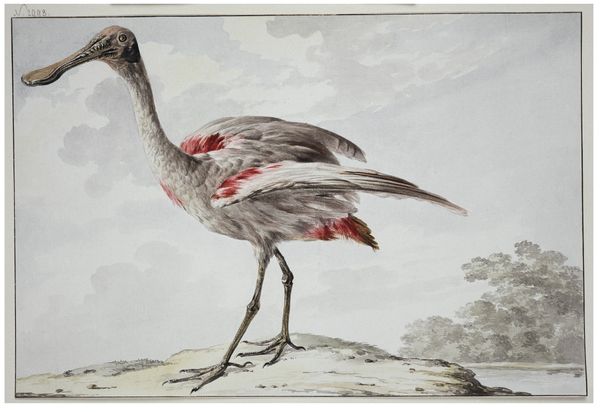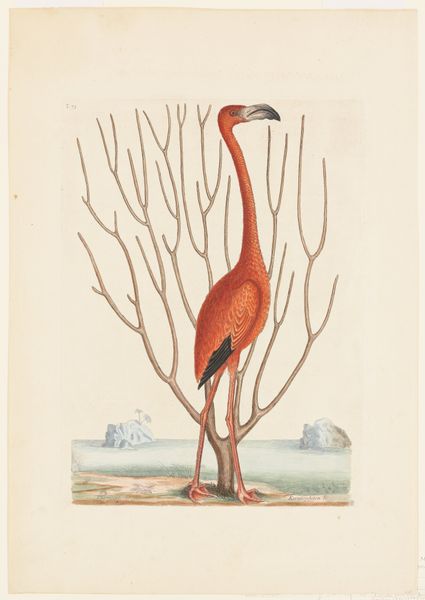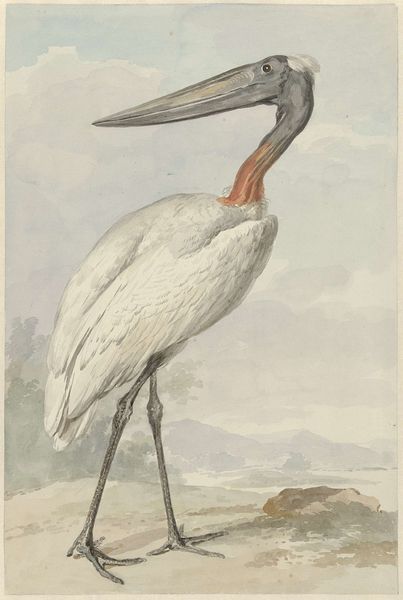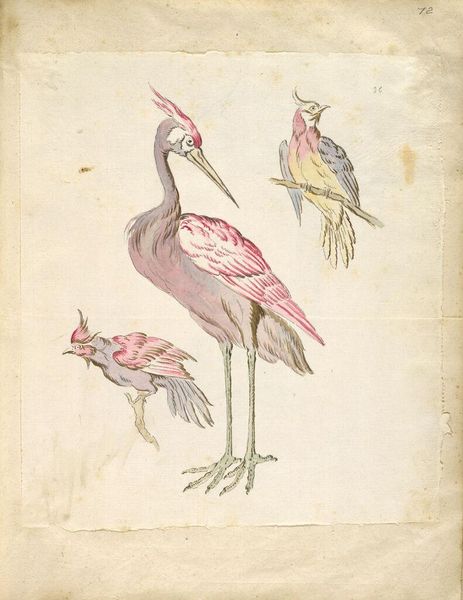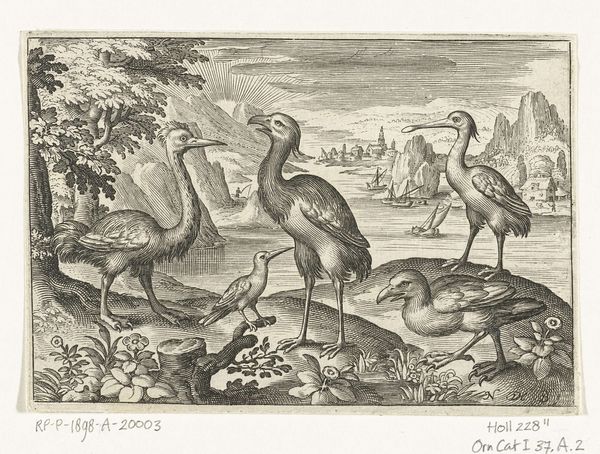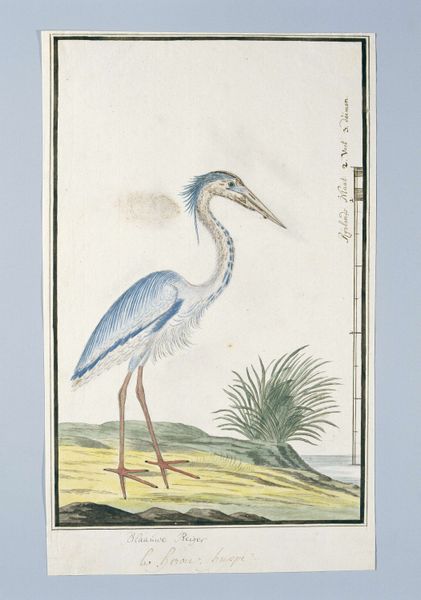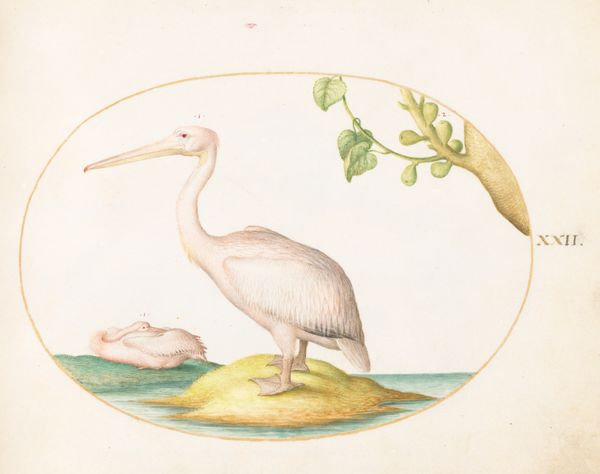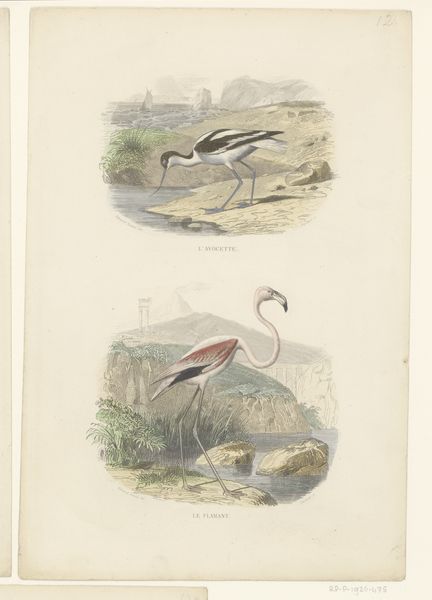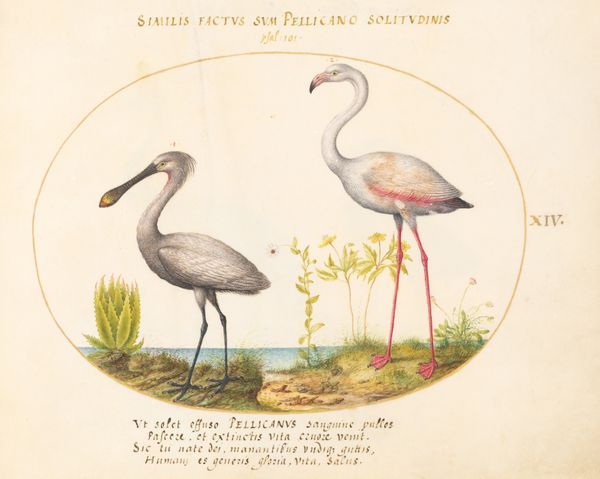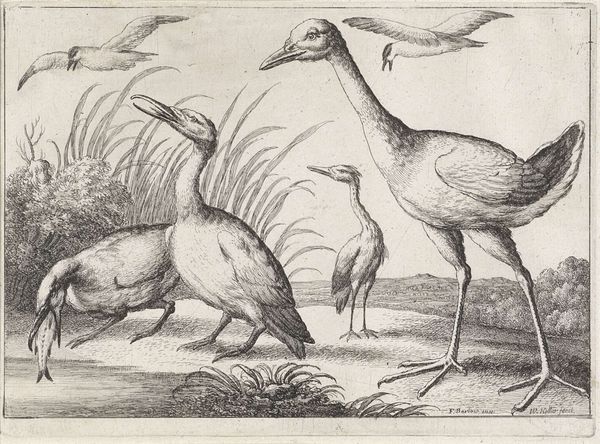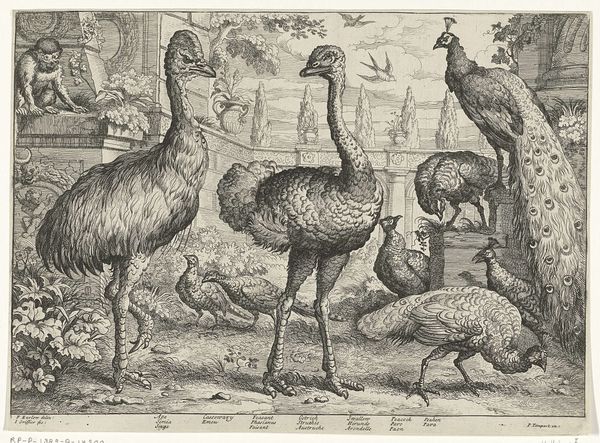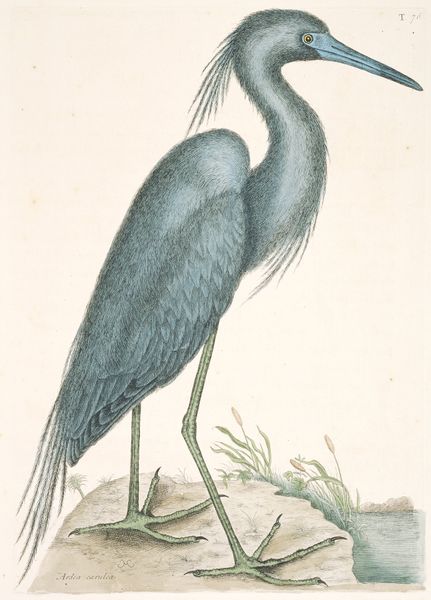
Birds 66. 1. Wood Ibis. 2. Scarlet I. 3. White Ibis. 4. Flamingo. 1808 - 1814
0:00
0:00
drawing, print, plein-air, watercolor, engraving
#
drawing
# print
#
plein-air
#
landscape
#
watercolor
#
united-states
#
watercolour illustration
#
engraving
#
realism
Dimensions: 10 1/2 x 13 1/2 in. (26.67 x 34.29 cm) (plate)
Copyright: Public Domain
Editor: So, this is Alexander Wilson's "Birds 66. 1. Wood Ibis. 2. Scarlet I. 3. White Ibis. 4. Flamingo," made sometime between 1808 and 1814. It's a watercolor and engraving showing four different kinds of birds. I’m struck by how different the birds appear from one another – they seem almost allegorical. What do you make of the piece? Curator: Wilson's birds do have an iconic feel, don't they? Look at the poses, the deliberate placement within the landscape. Each bird represents a specific aspect of the American landscape Wilson was trying to capture, and, in turn, contribute to America’s self-image. The flamingo, for example, in its vibrant scarlet, isn't just a bird. It’s a symbol of exoticism, a tie to the Caribbean, to a wilder, more vibrant world that existed beyond the familiar. Editor: So, the colors aren’t just for realism, they’re symbolic? Curator: Exactly. Consider how color is connected to the psyche, and to cultural memory. Wilson emphasizes each bird’s distinctive characteristics. The Wood Ibis with its sombre palette speaks to solemnity. The painting doesn’t just present images of birds – it invites us to weave them into a story about a specific time, a place, and its ideals. How do you read the presence of a landscape in the backdrop? Editor: I hadn’t thought of it that way, but that makes sense. The landscape is not so much a habitat, but a blank canvas, emphasizing the symbolic presence of each of these birds. Curator: Precisely. The backdrop offers a stage upon which these iconic representations can play out. They can contribute meaning and shape the viewer's understanding of not only these creatures, but the land they occupy, the hopes for its future, and its developing identity. Editor: I see. So by putting them together like this, Wilson wasn't just showing different species, he was crafting a statement about the new nation's natural bounty and its place in the world. I’ll never look at these illustrations the same way.
Comments
No comments
Be the first to comment and join the conversation on the ultimate creative platform.

